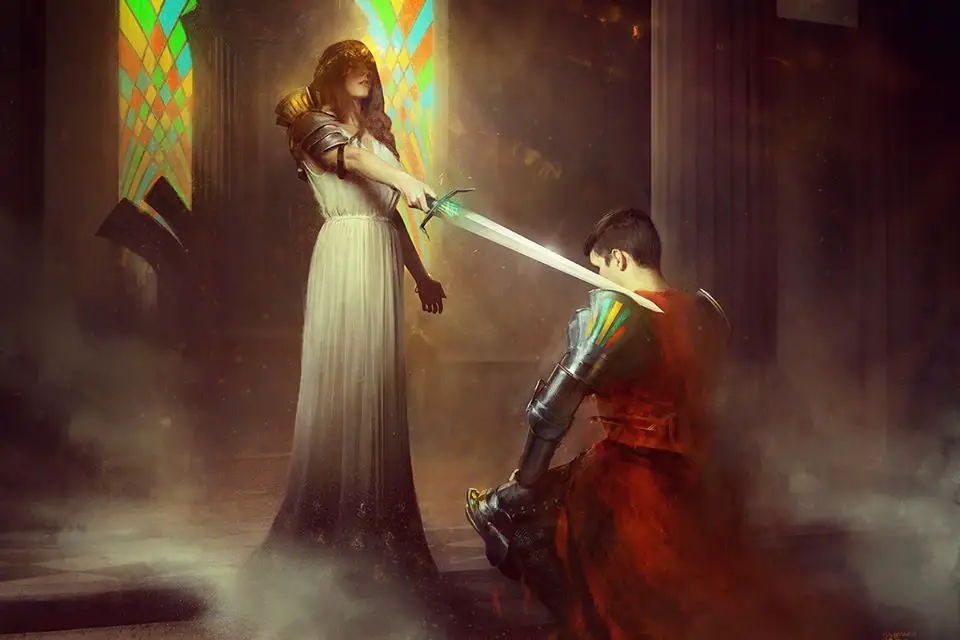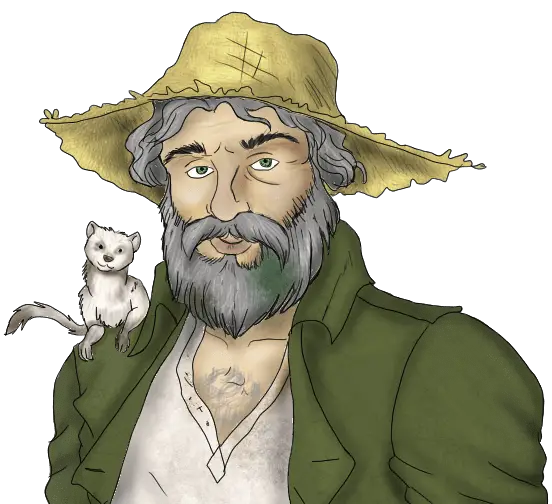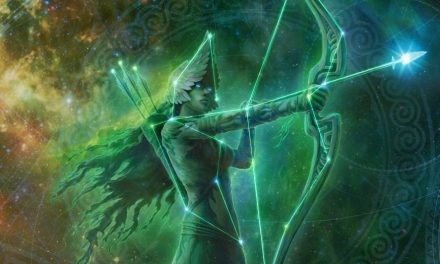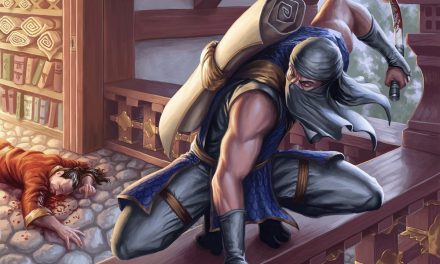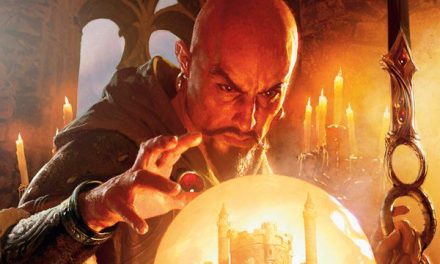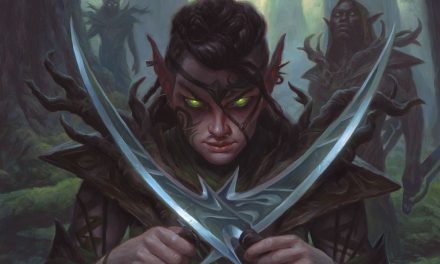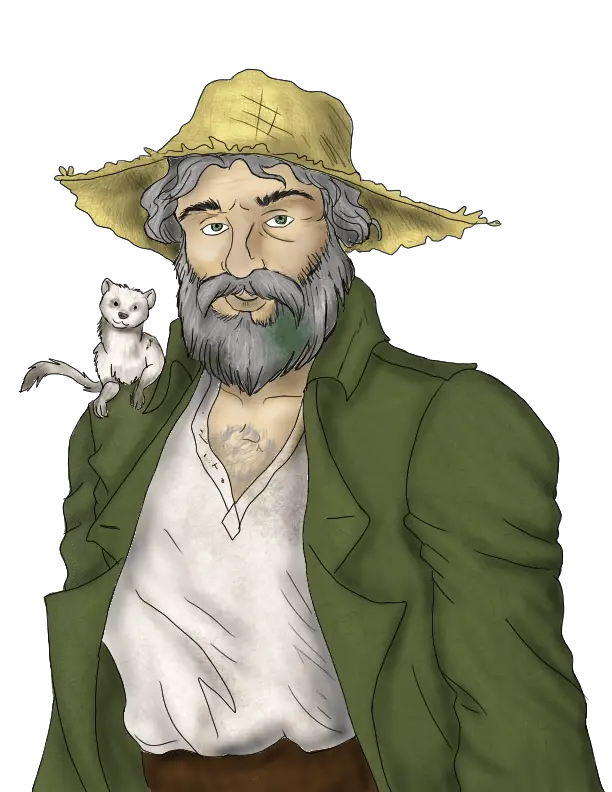Creating a memorable and engaging character in D&D (or any TTRPG for that matter) is one of the most rewarding aspects of the game. Whether you’re a seasoned player or a newcomer, the depth of your character can significantly enhance your gaming experience.
While there are countless questions you can ask yourself during character creation, focusing on a single, powerful question can provide profound depth and direction for your character’s development.
The question is simple: “What does my character need to learn?”
This simple yet transformative question can turn a flat, one-dimensional character into a dynamic, evolving persona that captivates both you and your fellow adventurers.
By identifying what your character needs to learn, you set the stage for a personal growth journey that adds emotional depth and narrative richness to your game.
This approach not only makes your character more relatable but also provides a clear path for their development throughout the campaign.
In this article, we’ll explore the power of this question, provide examples of how it can shape different types of characters, and offer practical tips for integrating this approach into your gameplay.
So, let’s dive in and discover how asking this one simple question can help you create better, more engaging D&D characters.
The Power of One Question
When it comes to creating a compelling character in Dungeons & Dragons, the question “What does my character need to learn?” serves as a powerful tool.
This question goes beyond the basic attributes and abilities, delving into the heart of your character’s personal growth and development.
Here’s why this question is so impactful.
Creating Dynamic Character Arcs
By focusing on what your character needs to learn, you set the stage for a dynamic and evolving character arc.
This approach ensures that your character isn’t static; instead, they grow and change in response to the challenges and experiences they encounter.
This growth makes the character more interesting and relatable, both to you as the player and to your fellow adventurers.
Just also note that character growth is a gradual thing and isn’t as simple as flipping a switch. But if you look for hooks in the adventure for your character to gradually learn their lesson, you start a wonderful process of going deeper into who that character is.
How has your character grown as a person from 5 sessions ago? 10? 50?
By the end of the adventure, has the character learned the lesson that they need to learn or are they at least better equipped to learn it?
Enhancing Player Engagement
Characters with clear learning goals are more engaging because they have a purpose and direction.
After all, this process of “Call to Adventure, Overcoming Adversity, Returning Home Changed” is what makes “The Hero’s Journey” such a key part of storytelling. Why would it be any different with the shared storytelling of a TTRPG?
When you know what your character needs to learn, every decision and action can be tied back to this central theme.
This not only makes your character’s journey more coherent but also keeps you, as the player, more invested in their development.
Adding Emotional Depth
Characters that need to learn something significant often have deeper emotional layers.
Whether it’s overcoming a personal flaw, facing a fear, or discovering a new perspective, these learning experiences add richness to your character’s story.
How does the lesson that your character needs to learn tie into their overall personality, ideals, bonds, and flaws? You can think of this question as a lens that helps really bring those aspects to life in a meaningful way for both the character and you as the player.
This emotional depth can lead to more meaningful interactions with other characters and can create memorable moments in your campaign.
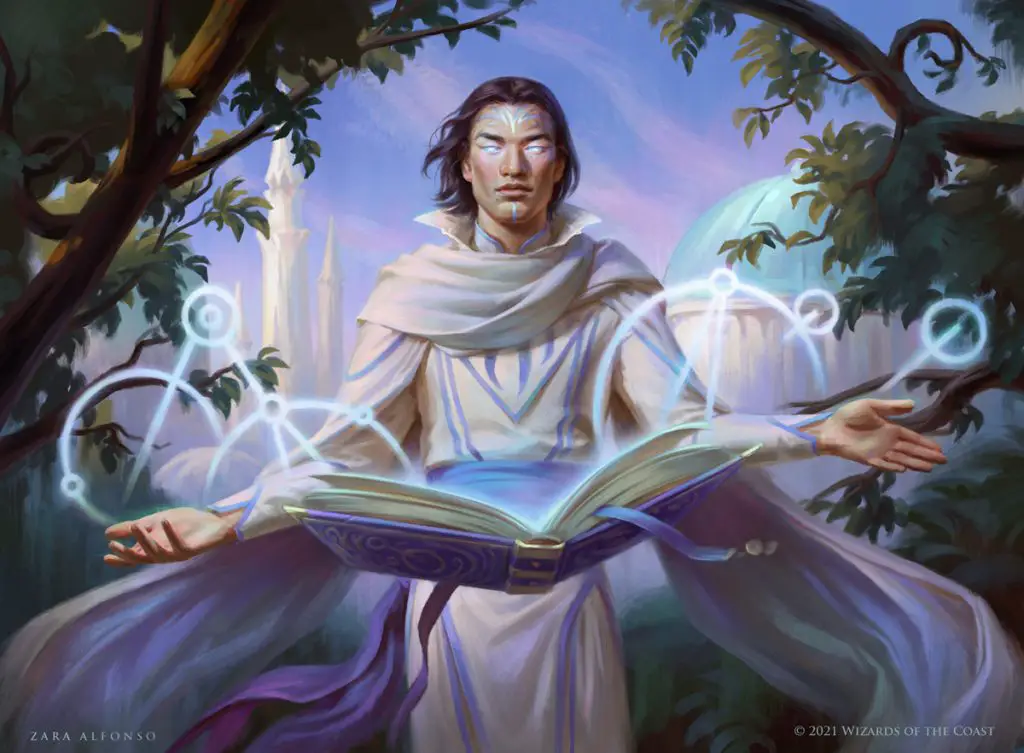
Examples in Action
Okay, so we’ve covered the question and what it means, but let’s look at a few concrete examples.
While there might be some specific points for your character’s arc (for example, the Monk finally gets to meet the warrior who killed their master), for the most part we want to keep this focused on feelings rather than specific conditions.
As I mentioned in my article about incorporating immersive theatre techniques at your table, these emotions (and abstract emotional goals) are often more important to character development than the specific incidents themselves.
It’s not about the super-awesome-totally-epic character that you made so much, but it is about the journey they went on. Bilbo Baggins was a far more interesting character during and after his adventure in “The Hobbit” than he was at the beginning!
To illustrate the power of this question, let’s look at a few examples:
The Timid Librarian
- Background: A librarian who is cowardly and has no real lived experiences outside of the ivory halls of academia.
- Lesson to Learn: Courage and the understanding that the most important parts of life are found by living it, not just reading about it.
- Character Arc: This character’s journey might involve facing fears, stepping out of their comfort zone, and discovering the richness of life through adventures and interactions with others. At some point, when possibly given the option to flee, does he stand and try to save his friends?
The Fierce Barbarian
- Background: A powerful Barbarian who is fiercely independent and prides themselves on their toughness and survival skills.
- Lesson to Learn: The value of compassion and that real strength lies in standing up for others, not just oneself. It’s easy to be strong but bitter, but it takes real strength to balance that brawn with compassion for others.
- Character Arc: This character could learn to open up to their party, showing vulnerability and understanding that protecting others can be a sign of true strength.
The Free-Spirited Bard
- Background: A Bard who is much beloved, effortlessly making friends and lovers with their free-spirited attitude. They drift free like the wind, never staying put for long enough to get truly comfortable.
- Lesson to Learn: How to control their impulses and find joy and fulfillment in stability without losing their sense of freedom.
- Character Arc: The Bard might face situations that require them to make more responsible choices, balancing their desire for spontaneity with the benefits of having stable relationships and commitments.
By asking “What does my character need to learn?” you create a roadmap for your character’s personal growth throughout the campaign.
This question not only helps in creating a more engaging and relatable character but also provides a clear direction for their journey, making the game more enjoyable for everyone involved.
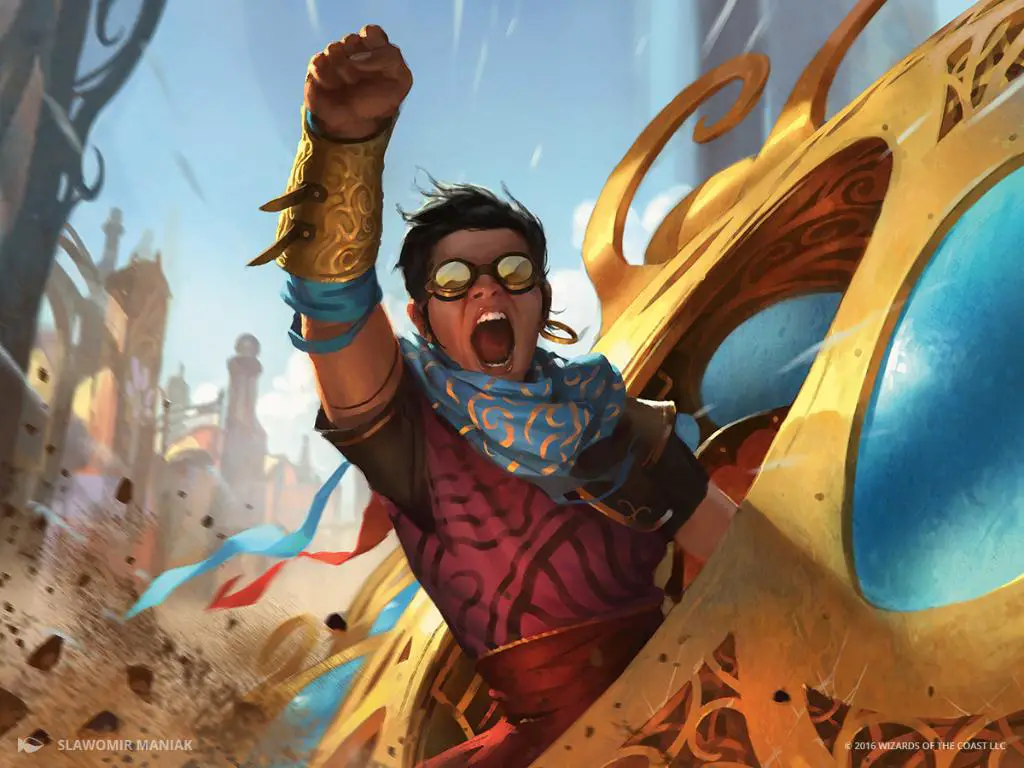
Working with the GM
Creating a character with a clear learning arc is a collaborative effort that involves not just the player but also the Game Master (GM).
Open communication with your GM can help ensure that your character’s journey is woven seamlessly into the broader narrative of the campaign.
Remember: while you only have your character to play, the GM is prepping everything else. Keeping them in the loop with your character’s theme and development is important!
Here’s how to effectively work with your GM to bring your character’s learning goals to life:
Collaboration is Key
Discussing your character’s learning goals with your GM is crucial for a cohesive and engaging story.
Share your character’s background, their strengths and weaknesses, and what they need to learn. This allows the GM to tailor certain challenges and story beats in the campaign to facilitate your character’s growth.
For example, if your character is a timid librarian who needs to learn courage, the GM might incorporate scenarios that push your character to face their fears, such as rescuing a kidnapped NPC or exploring a haunted library.
This collaboration ensures that your character’s personal journey is integrated into the campaign’s narrative, making the experience more immersive for everyone.
Embrace Flexibility
While having a clear learning goal for your character is important, it’s equally crucial to remain flexible.
D&D is a game of unpredictability, where dice rolls and player decisions can lead to unforeseen outcomes. Your character’s journey may not go exactly as planned, and that’s perfectly okay.
Embrace the unexpected twists and turns that come your way. These moments often lead to the most memorable and meaningful character development.
For instance, if your fiercely independent Barbarian unexpectedly finds themselves relying on their party for survival, it can be a pivotal moment that accelerates their learning about the value of teamwork and compassion.
In fact, these are exactly the kinds of situations that drive the story forward in a way that is natural and makes sense. You can learn more about that in my article covering What Every DM Can Learn From South Park.
The Red Thread Concept
The concept of the “Red Thread” is a powerful metaphor for your character’s core theme or lesson. The Red Thread represents the central narrative that ties your character’s story together, guiding their actions and decisions throughout the campaign.
I would strongly recommend checking out my article about the Red Thread concept. It’s another seriously powerful tool to increase immersion in your games.
By identifying your character’s Red Thread, you create a consistent and compelling narrative arc. Share this Red Thread with your GM so they can help weave it into the campaign’s overarching story.
For example, if your Free-Spirited Bard’s Red Thread is learning to balance spontaneity with stability, the GM can introduce plot points that challenge the Bard to make more responsible choices without losing their sense of freedom.
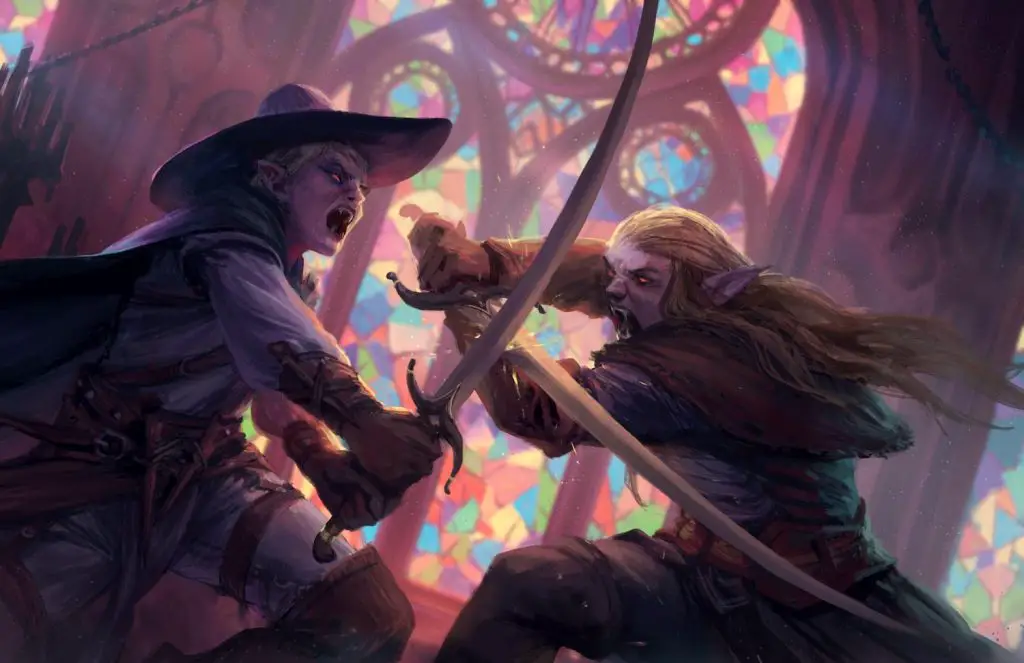
Practical Tips
Integrating the question “What does my character need to learn?” into your character creation process can profoundly enhance your D&D experience.
Here are some practical tips to help you effectively incorporate this approach and ensure your character’s growth is consistently reflected throughout the campaign.
Character Sheet Integration
Adding a dedicated section to your character sheet for your character’s learning goal can serve as a constant reminder of their personal journey. This section can include:
- Learning Goal: Write down the specific lesson your character needs to learn.
- Milestones: List potential milestones or key events that could signify progress in their learning journey.
- Reflections: Periodically update this section with reflections on how recent events have impacted your character’s growth.
By keeping this information on your character sheet, you ensure that your character’s development remains a focus throughout the campaign.
Think of it like a miniature journal that lets you see your character’s progress over time. If your group does a “campaign aftercare session,” it’s particularly fun being able to look at those exact growing moments your characters really internalized.
Session Zero
Session Zero is an invaluable opportunity to discuss your character’s learning goals with your GM and fellow players. Use this session to:
- Share Your Vision: Clearly articulate your character’s background, their learning goal, and how you envision their development.
- Seek Feedback: Invite feedback from your GM and other players to refine your character’s arc and ensure it aligns with the campaign’s themes.
- Set Expectations: Establish mutual expectations about how your character’s learning journey will be integrated into the campaign. This ensures everyone is on the same page and can support each other’s character arcs.
Related: Running Session Zero
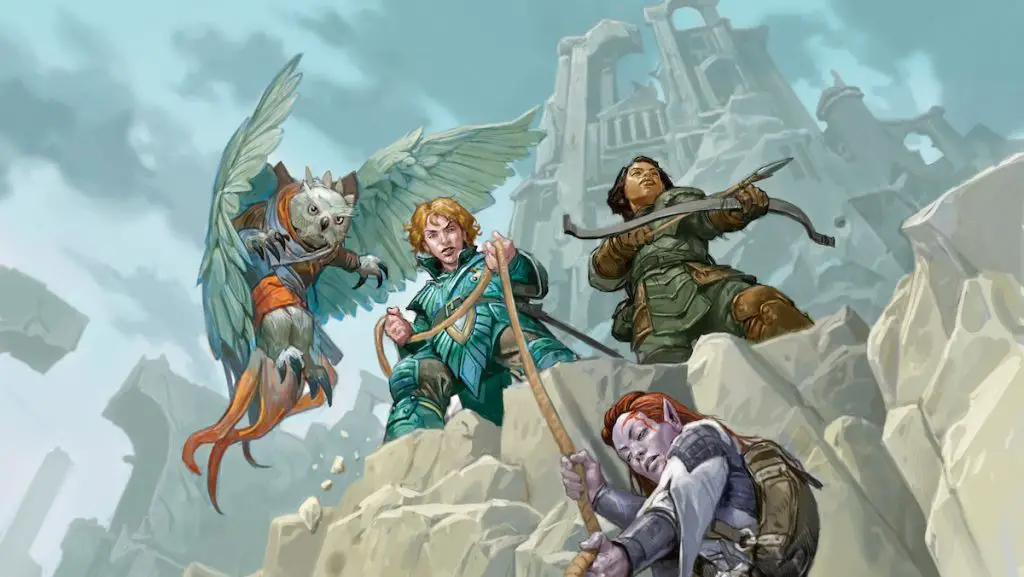
Ongoing Development
Character development is an ongoing process that evolves with the campaign. Here’s how to keep your character’s learning journey dynamic and engaging:
- Regular Check-ins: Periodically check in with your GM to discuss your character’s progress and any new developments. This helps ensure your character’s arc remains relevant and impactful.
- Adapt to the Narrative: Be open to adapting your character’s learning journey based on the campaign’s unfolding events. Unplanned encounters and challenges can provide rich opportunities for growth.
- Reflect and Evolve: After significant sessions or events, take time to reflect on how they have influenced your character. Update your character sheet with these reflections and consider how they might shape your character’s future actions and decisions.
In-Game Roleplaying
Bringing your character’s learning goal into your roleplaying can enrich the game for you and your fellow players. Here are some tips:
- Stay True to the Goal: Consistently roleplay your character in a way that reflects their learning journey. For example, if your character needs to learn courage, portray their initial hesitations and gradual steps toward bravery.
- Engage with Others: Use interactions with other characters to explore and challenge your character’s learning goal. Collaborate with fellow players to create meaningful roleplaying moments that drive your character’s growth.
- Celebrate Milestones: Acknowledge and celebrate key milestones in your character’s journey. These moments can be significant turning points that deepen your character’s development and enrich the overall narrative.
Conclusion – What Does Your Character Need To Learn?
By integrating the question “What does my character need to learn?” into your character creation process and gameplay, you can create a richer, more engaging D&D experience.
This approach helps you develop dynamic character arcs, enhances player engagement, and adds emotional depth to your campaign.
I started asking my players this question on a whim and the effects on the group’s roleplaying were immediate. It’s been a complete game-changer for how we create characters and make the world feel immersive and real.
But now I’d love to hear your thoughts! How has focusing on character growth impacted your D&D experiences? Share your stories and insights in the comments below.
And if you want more tips and inspiration for your tabletop adventures, be sure to sign up for the Tabletop Joab newsletter.
Happy adventuring!

